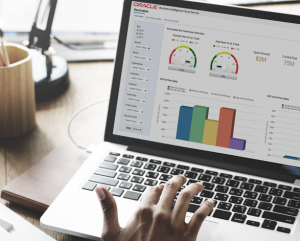Oracle Cloud offers the concept of Functional Area catalogs that can be leveraged in many areas such as Inventory, Manufacturing, Sales, Purchasing and others for a variety of purposes. Catalogs can also be shared where a single catalog is assigned to multiple functional areas. For this discussion, we will assess only Purchase Categories and possible uses in purchasing processes.
Purchase Categories
Category management is an approach to purchasing activity organization within a business operation. Applying commodity grouping to purchased goods and services provides strategic support to several supply chain and spend management activities. Categories can also provide transactional support ensuring correct accounting, leveling workload, strategic planning and management oversight.
Example Applications:
- Deriving Charge Accounts
- Analyzing spend
- Managing Approved sources
- Managing Supplier Quality
- Requisition and Purchase Document Approval Rules
- Browsing Categories for Self-Service Shopping
- Buyer Assignment Rules
Defining Categories
Cloud categories offer highly flexible alphanumeric structure choices that can accept coding such as UNSPSC or simple text such as ‘Laptop’. Each category record allows for a Name, Code, Description, image and attachments that can be leveraged in a variety of ways. When deciding on what categories are needed, a typical starting point is the Natural Account from the chart of accounts structure. Natural Accounts provide a baseline of purchase expense groupings that can become more granular groupings within purchase categories.
Example Categories
The Chart of Accounts contains natural account ‘600010 – Computing Equipment and Hardware’. This baseline group is broken down into purchase categories Desktop Computer, Laptop Computer, Notebooks, Mouse, Keyboards, External Hard Drives and Monitors. While all of these purchase categories may be charged to account 600010, the spend analysis allows for isolating Laptop Computers as a specific spend group. This in turn can support more strategic sourcing decisions for purchase agreements armed with projected spend by the Laptop category.
Guide to Oracle Cloud: 5 Steps to Ensure a Successful Move to the Cloud
Explore key considerations, integrating the cloud with legacy applications and challenges of current cloud implementations.
Constructing Categories
Category naming decisions should be based on a combination of need (how granular) and usability (user recognition). Commodity based purchase categories have existed for a long time in the purchasing world and manifested as both numerical codes (UNSPSC 43211503) and text codes (COMPUTERS.LAPTOP). While the numeric code is very useful in dissecting spend, text codes are more user friendly. The decision regarding what is best depends on user recognition within your organization. Some organizations are very comfortable with numeric codes and that is perfectly fine. If that is not the case, text coding may offer higher chance of correct usage.
Three Category Naming Methods
The following displays 3 methods of coding the same categories. User category selection process based on Category Name with the option to open separate search form that includes Category Description as a search criteria.
Numeric Coding
| Category Name | Category Description |
|---|---|
| 43211501 | Computer servers |
| 43211502 | High end computer servers |
| 43211503 | Notebook/Laptop computers |
| 43211504 | Personal digital assistant PDAs or organizers |
| 43211505 | Point of sale POS terminal |
| 43211506 | Thin client computers |
| 43211507 | Desktop computers |
| 43211508 | Personal computers |
| 43211509 | Tablet computers |
| 43211510 | Mainframe console or dumb terminals |
| 43211511 | Wearable computing devices |
| 43211512 | Mainframe computers |
Pros:
– High compatibility with data analysis. Allows for data grouping the code from left to right for variable groups of categories. Example, 4321xxxx includes all Computer Equipment and Accessories and 432115xx includes only computers
Cons:
– Not user friendly
Text Coding
| Category Name | Category Description |
|---|---|
| Computers.Servers | Computer servers |
| Computers.Servers.High | High end computer servers |
| Computers.Notebook | Notebook/Laptop computers |
| Computers.PDA | Personal digital assistant PDAs or organizers |
| Computers.POS terminal | Point of sale POS terminal |
| Computers.Thin client | Thin client computers |
| Computers.Desktop | Desktop computers |
| Computers.Personal | Personal computers |
| Computers.Tablet | Tablet computers |
| Computers.Mainframe console | Mainframe console or dumb terminals |
| Computers.Wearable | Wearable computing devices |
| Computers.Mainframe | Mainframe computers |
Pros:
– Medium compatibility with data analysis. Allows for data grouping on macro level Computers.
– User friendly
Cons:
– Cannot be as easily grouped in higher groupings above Computers
– User must know primary grouping name such as Computers
Literal Name Coding
| Category Name | Category Description |
|---|---|
| Computer servers | Computer servers |
| High end computer servers | High end computer servers |
| Notebook computers | Notebook/Laptop computers |
| Personal digital assistant PDAs or organizers | Personal digital assistant PDAs or organizers |
| Point of sale POS terminal | Point of sale POS terminal |
| Thin client computers | Thin client computers |
| Desktop computers | Desktop computers |
| Personal computers | Personal computers |
| Tablet computers | Tablet computers |
| Mainframe console or dumb terminals | Mainframe console or dumb terminals |
| Wearable computing devices | Wearable computing devices |
| Mainframe computers | Mainframe computers |
Pros:
– User friendly, uses common names
Cons:
– Cannot be easily grouped for analysis
Summary
There are many ways to slice and dice purchases for your organization. The choice you make will determine the leverages available to your strategic and tactical decisions.

